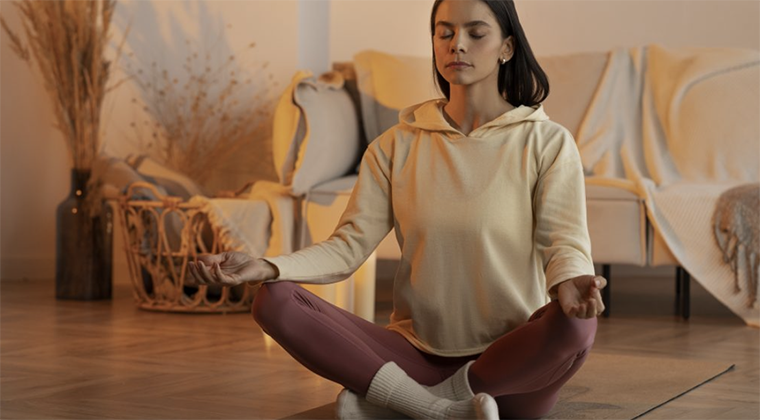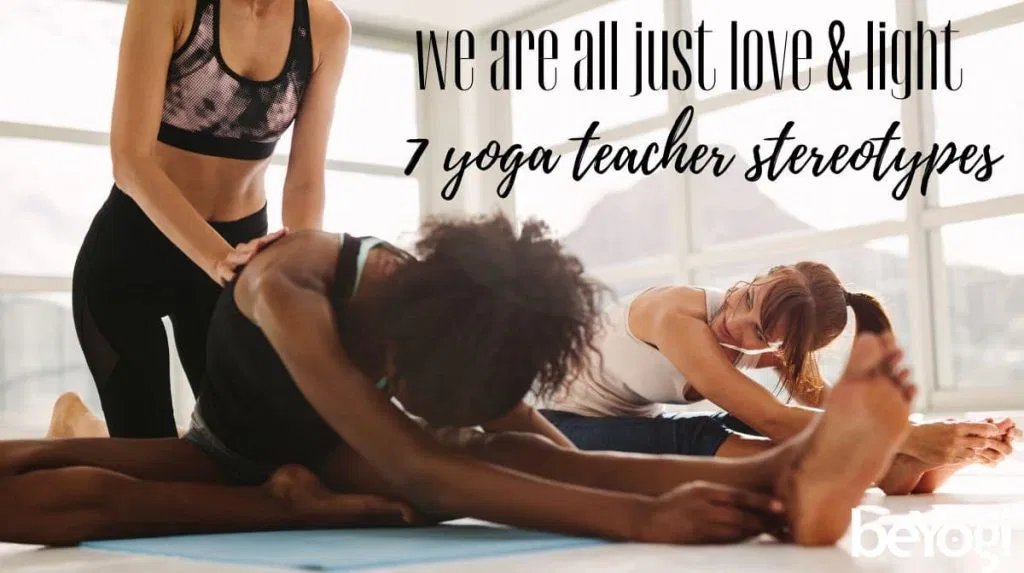21 Stereotypes, Misconceptions, and Myths About Yoga—Debunked
Yoga has gained massive popularity over the past few decades. What was once considered a niche, spiritual practice is now a global wellness phenomenon. But with that growth has come a flood of misunderstandings, stereotypes, and myths—many of which stop people from ever giving yoga a real chance.
From thinking you need to be super flexible to assuming it’s only for women or spiritual types, there are a lot of false ideas floating around about what yoga is and who it’s for.
Let’s break down the 21 most common yoga myths and clear the air once and for all.

🧘♀️ 1. You Have to Be Flexible to Do Yoga
Let’s start with the most common myth: “I can’t do yoga—I’m not flexible.”
Here’s the truth: you don’t need to be flexible to start yoga. You get flexible through yoga. Everyone starts somewhere, and yoga meets you right where you are. Whether you can touch your toes or not doesn’t matter. Over time, your flexibility naturally improves as your body adapts to regular movement and stretching.
🧔 2. Yoga Is Only for Women
Although yoga is often portrayed in media with mostly women, the truth is yoga was originally practiced by men thousands of years ago in India. Today, it’s for everyone—regardless of gender, age, or background. In fact, many male athletes, soldiers, and entrepreneurs swear by yoga for its strength, focus, and recovery benefits.
🧘 3. Yoga Is Just Stretching
Another popular misconception is that yoga is nothing more than glorified stretching. While stretching is part of the physical aspect (asana), yoga is so much more. It also includes breathing techniques (pranayama), meditation, mindfulness, and ethical principles that promote a balanced, intentional lifestyle.
It’s a full-body, full-mind experience—not just a warm-up.
💰 4. Yoga Is Too Expensive
Yes, some yoga studios and retreats can be pricey, but you don’t need to spend a fortune to practice yoga. There are tons of free or affordable options out there—from YouTube channels and apps to donation-based classes and community centers. All you really need is some space, a mat, and a willingness to show up.
🕉️ 5. Yoga Is a Religion
While yoga has deep spiritual roots and originated in Hindu philosophy, it is not a religion. Yoga is a spiritual practice, not a belief system. It doesn’t require you to worship anything or give up your personal faith. People of all religions—or none at all—can practice yoga and benefit from it.
🦵 6. You Need a “Yoga Body”
Here’s a myth rooted in toxic beauty standards: that only slim, toned bodies belong in yoga.
Yoga is for all bodies. Whether you’re curvy, muscular, thin, tall, short, older, younger, able-bodied, or disabled—your body is a yoga body. Yoga is about feeling at home in your skin, not about looking a certain way.
🔮 7. Yoga Is Too Woo-Woo or “Out There”
Some people associate yoga with chanting, incense, and crystals—and feel like it’s just not their thing. The reality is: yoga can be as spiritual or as practical as you want.
Some practices focus purely on physical fitness. Others incorporate deep meditative elements. The beauty of yoga is that it’s adaptable to your personality, beliefs, and needs.
💪 8. Yoga Isn’t a Real Workout
Think yoga is too gentle to be effective? Think again. Some styles—like Vinyasa, Ashtanga, or Power Yoga—are intense, sweaty, and physically demanding. They build strength, improve endurance, challenge your balance, and engage your core like crazy.
Even gentler styles like Yin or Restorative are powerful in their own way—supporting your nervous system, joints, and mental health.
🕰️ 9. You Have to Practice for Hours a Day
You don’t need to dedicate 90 minutes a day to yoga to see results. In fact, even 10–20 minutes a day can make a real difference. A short daily practice is often more effective than one long session once a week. It’s all about consistency, not perfection.
🙆 10. All Yoga Is the Same

There are many styles of yoga—each with a different pace, focus, and intention:
- Hatha is great for beginners.
- Vinyasa is dynamic and flowy.
- Yin is slow and deep.
- Ashtanga is structured and athletic.
- Restorative is calming and meditative.
Not enjoying one class doesn’t mean yoga isn’t for you—it just means you haven’t found your style yet.
🧓 11. Yoga Is Only for Young People
Yoga isn’t limited by age. In fact, many seniors practice yoga to improve mobility, reduce pain, and boost balance. There are even Chair Yoga classes designed specifically for older adults or people with limited movement.
Yoga helps you age gracefully—physically, mentally, and emotionally.
🚫 12. You Have to Be Injury-Free to Start Yoga
Yoga can be adapted to support injury recovery and is often used in physical therapy settings. Instructors can modify poses and help you avoid movements that aggravate your condition.
Always consult a medical professional if you’re unsure—but in many cases, yoga can actually help with healing and mobility.
📿 13. You Have to Meditate or Chant
Not into chanting “Om”? That’s totally fine. While some classes include meditation or Sanskrit chants, they’re never mandatory.
You can focus solely on the movement and breath if that’s what works for you. As your practice evolves, you might explore the meditative side—but it’s always your choice.
😤 14. Yoga Is Just for Stress Relief
While yoga is fantastic for reducing stress, that’s only one part of its benefit. It also improves strength, posture, flexibility, energy levels, focus, sleep quality, digestion, and self-awareness. Stress relief is just the beginning.
👪 15. Yoga Is a Solo, Serious Practice
Sure, yoga can be a quiet and personal journey, but it can also be social, lighthearted, and fun. Laughter yoga, family yoga, and partner yoga add a playful, community-driven element that breaks the stereotype of yoga being solitary or intense.
👖 16. You Need Fancy Gear and Lululemon Pants
You don’t need designer leggings, cork blocks, or expensive mats. Yoga isn’t about aesthetics—it’s about awareness. Wear whatever’s comfortable and stretchy, and use household items like pillows or books if you don’t have props.
🧑🏫 17. Yoga Teachers Have All the Answers
Yoga teachers are guides—not gurus. They’re trained to lead you through the practice, but your body is your best teacher. If something doesn’t feel right, it’s okay to modify or skip a pose. Learning to listen inward is one of yoga’s greatest lessons.
🤳 18. Instagram Yoga Is Real Yoga
Social media often showcases yoga as a series of dramatic, acrobatic poses. But the truth is: real yoga isn’t about showing off—it’s about showing up.
You don’t need to master handstands or post pictures to be a “real yogi.” The real yoga happens off the mat—in your breath, your mindset, and how you treat yourself and others.
✝️ 19. You Have to Give Up Your Faith to Practice Yoga
Many people worry that practicing yoga conflicts with their religion. In reality, yoga is a personal experience that doesn’t ask you to change your beliefs. It enhances your inner connection—whatever that looks like for you.
👂 20. If You’re Not “Good” at Yoga, You Shouldn’t Do It
Yoga isn’t a competition. There’s no such thing as being “bad” at yoga. Everyone has different bodies, limits, and experiences. Yoga is about how you move and breathe—not how far you can bend.
🏁 21. Yoga Has a Finish Line
Spoiler: it doesn’t. Yoga is a lifelong journey. There’s always more to explore—whether it’s refining your breath, deepening your awareness, or uncovering new layers of peace within yourself. There’s no end goal—just an ever-evolving path.
🙋♀️ Frequently Asked Questions (FAQ)
1. Do I need a yoga mat to start?
Not necessarily! A carpet or towel works fine for beginners. As you progress, a good mat can offer support and grip.
2. How often should I practice?
Ideally 2–3 times per week to start. Even short daily sessions of 10–20 minutes can be transformative.
3. Is yoga safe during pregnancy?
Yes, with proper guidance. Look for prenatal yoga classes and always consult your doctor first.
4. Can kids do yoga?
Absolutely. Many schools and programs now offer yoga for kids to improve focus, flexibility, and emotional regulation.
5. What if I can’t keep up in class?
Go at your own pace. Modify, rest, and skip poses if needed. Yoga is personal—not a race.
6. Will yoga help with anxiety or depression?
Yoga can be a supportive tool. Many people find relief through breathwork and mindfulness. However, it’s not a substitute for professional mental health care.
7. Can I do yoga with chronic illness or disability?
Yes. Many styles and teachers specialize in adaptive yoga. Chair yoga, restorative yoga, and yoga therapy are great options.
8. Should I eat before doing yoga?
It’s best to practice on a light or empty stomach. A small snack an hour before is fine, but avoid heavy meals right before class.

🌟 Final Thoughts
Yoga is not just about the poses. It’s a pathway to self-awareness, strength, healing, and peace. The myths and stereotypes surrounding yoga can be limiting, but when you peel them away, what you’re left with is a practice that welcomes everyone.
You don’t need to be flexible, fit, spiritual, or wealthy to do yoga. You just need a willingness to breathe, to move, and to explore your inner world—one mindful moment at a time.
So the next time someone tells you yoga is only for stretchy young women in leggings—send them this article. And maybe, invite them to a class.
